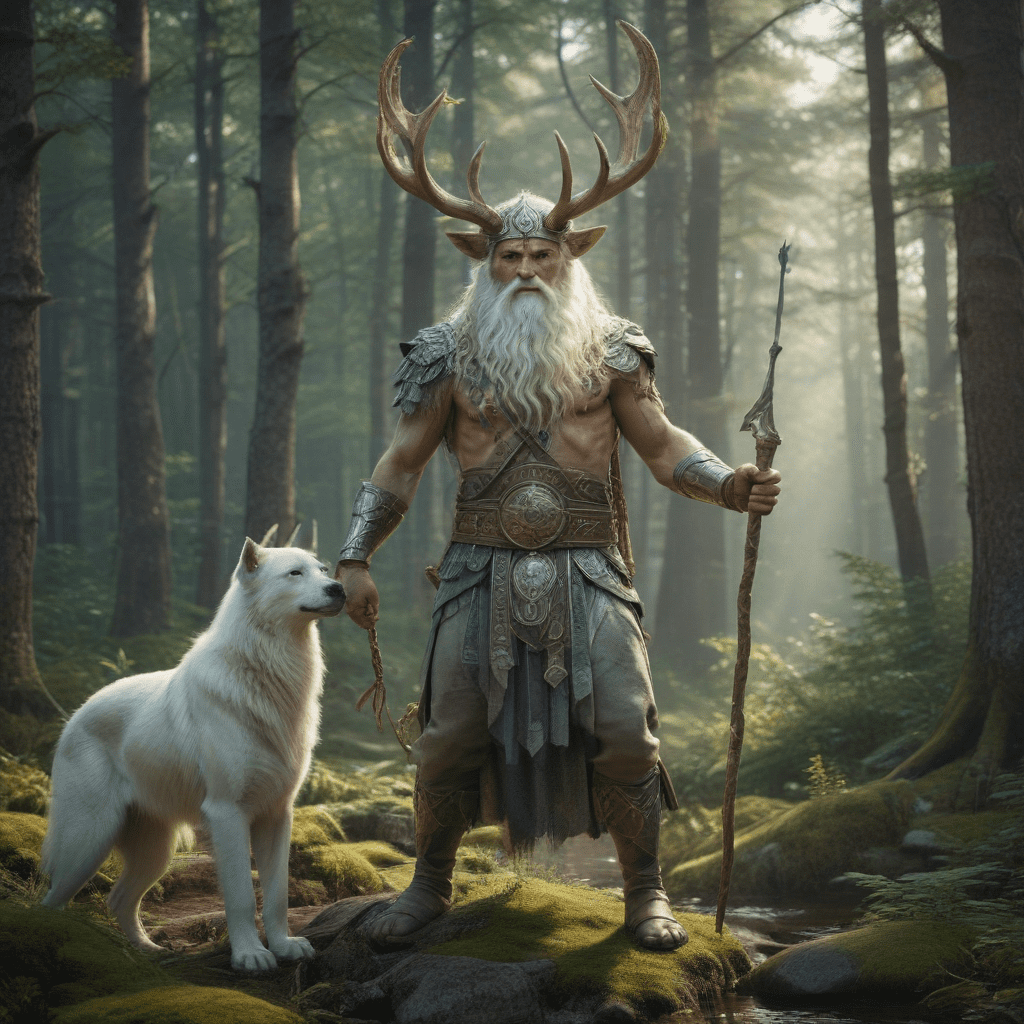Finnish Mythology: The Wisdom of the Natural World
I. Introduction
Finnish mythology, a rich tapestry of beliefs and stories, has long celebrated the profound interconnectedness between humans and the natural world. In the dense forests, shimmering lakes, and vast skies of Finland, the ancient Finns found not only sustenance but also a source of wisdom and guidance. The natural world, in all its manifestations, became an integral part of their spiritual and cultural identity.
II. The Sacredness of the Forest
The vast forests of Finland were considered sacred places, teeming with supernatural beings and spirits. The Finns believed that trees possessed "haltija," or guardian spirits, that protected them from harm and granted wisdom to those who respected them. The forest was not merely a source of timber but a living entity with its own consciousness, to be treated with reverence and gratitude.
III. The Spirit of Trees
The "haltija" of trees were believed to have a profound influence on the lives of humans. People would often pray to these spirits for guidance, protection, and healing. Trees were also seen as symbols of fertility and longevity, with certain species believed to possess magical properties. Respect for trees was deeply ingrained in Finnish culture, with laws and traditions in place to protect them from damage.
IV. The Significance of Water
Finland's countless lakes, rivers, and seas were vital to the survival and well-being of its people. Water was not only a source of sustenance but also a symbol of purification and renewal. The Finns believed in water spirits, such as the "näkki," a mischievous creature that lured people into drowning. Respect for water was paramount, as it was seen as a gift from the gods that should be cherished and protected.
V. Animals in Mythology
Animals played a significant role in Finnish mythology, each species embodying specific qualities and attributes. The bear, with its strength and wisdom, was revered as a symbol of courage and resilience. The elk, known for its fertility and ability to regenerate its antlers, represented renewal and abundance. Animals were seen as messengers from the gods, their behavior and appearance often interpreted as signs and omens.
VI. The Role of the Sky
The sky, with its vastness and celestial bodies, held immense significance in Finnish mythology. The sun, moon, and stars were considered guides and sources of wisdom. The sun was associated with the god Ukko, the thunderer, and was seen as a symbol of strength and power. The moon, on the other hand, was believed to influence fertility and the tides. Stars were used for navigation and divination, guiding travelers and providing insights into the future.
VII. Natural Phenomena as Portents
The ancient Finns observed natural phenomena closely, interpreting them as signs and omens from the gods. Storms, lightning, and rainbows were seen as messengers from the heavens. A sudden clap of thunder could be a warning of impending danger, while the appearance of a rainbow was often interpreted as a sign of hope and renewal. These natural occurrences were not merely meteorological events but cosmic messages to be heeded and respected.
VIII. Shamanism and Nature
Shamans, also known as "noita," played a crucial role in Finnish mythology as intermediaries between humans and the natural world. Through trance states and rituals, shamans communicated with spirits, healed the sick, and influenced the weather. They were seen as protectors of the community, guardians of ancient knowledge, and masters of the forces of nature. Shamanism was an integral part of Finnish spiritual life, connecting humans to the wisdom and power of the natural realm.
IX. Environmentalism in Finnish Mythology
Respect for the natural world was deeply embedded in Finnish mythology. The Finns believed in the interconnectedness of all living things, recognizing the delicate balance between humans and their environment. Trees, animals, and water bodies were not merely resources to be exploited but sentient beings deserving of respect and protection. This environmental consciousness is evident in numerous myths and stories that emphasize the consequences of harming nature and the importance of living in harmony with it.
X. Conclusion
Finnish mythology is a testament to the deep bond between humans and the natural world. The forests, waters, animals, and sky were not just elements of the landscape but sources of wisdom, guidance, and inspiration. The ancient Finns understood the importance of respecting and protecting the environment, recognizing that their well-being was inextricably linked to the health of the natural world. Today, the wisdom of Finnish mythology continues to resonate, reminding us of the interconnectedness of all living beings and the importance of preserving our planet for future generations.
FAQ
Q: What is the main theme of Finnish mythology?
A: The interconnectedness between humans and the natural world.
Q: What were some important natural elements in Finnish mythology?
A: Forests, water, animals, and the sky.
Q: How did the Finns interpret natural phenomena?
A: As signs and omens from the gods.
Q: What role did shamans play in Finnish mythology?
A: Intermediaries between humans and the natural world.
Q: Is Finnish mythology relevant today?
A: Yes, it teaches us the importance of respecting the environment and living in harmony with nature.



